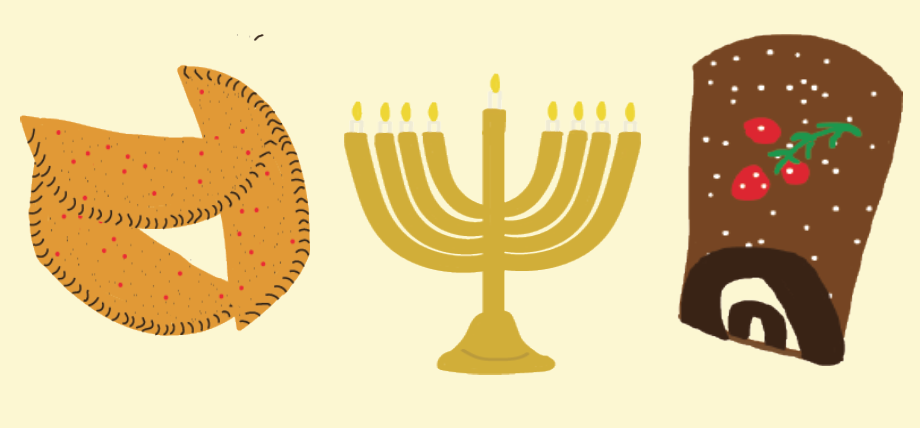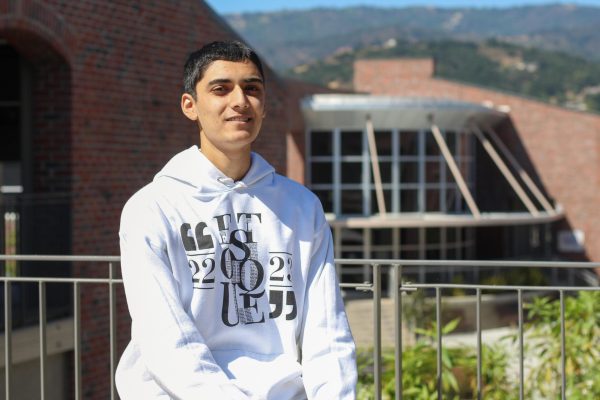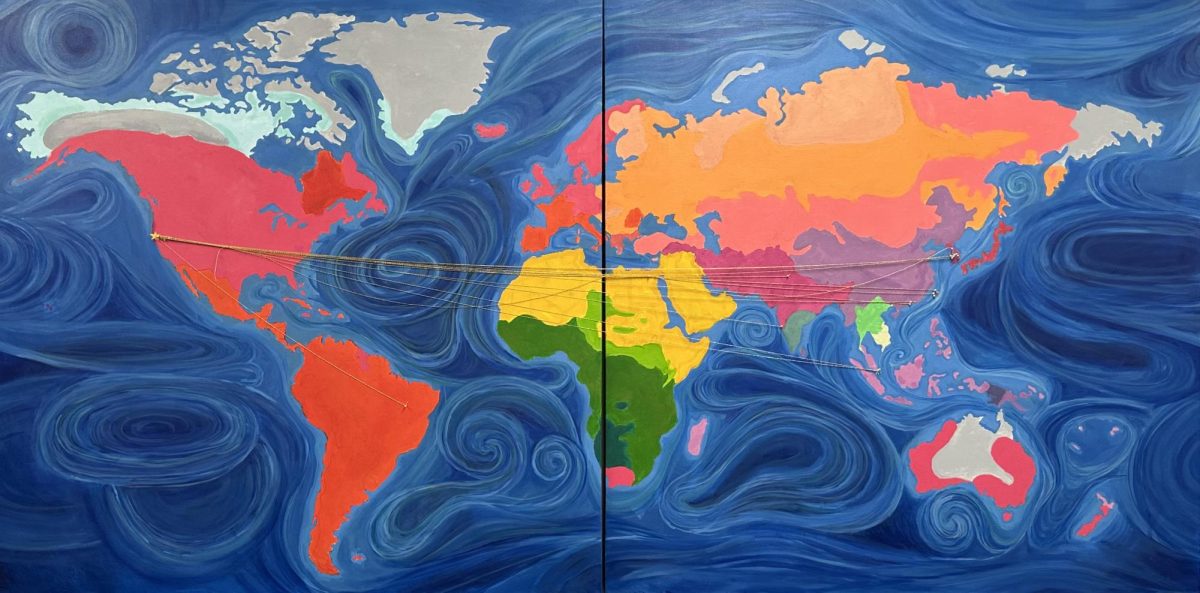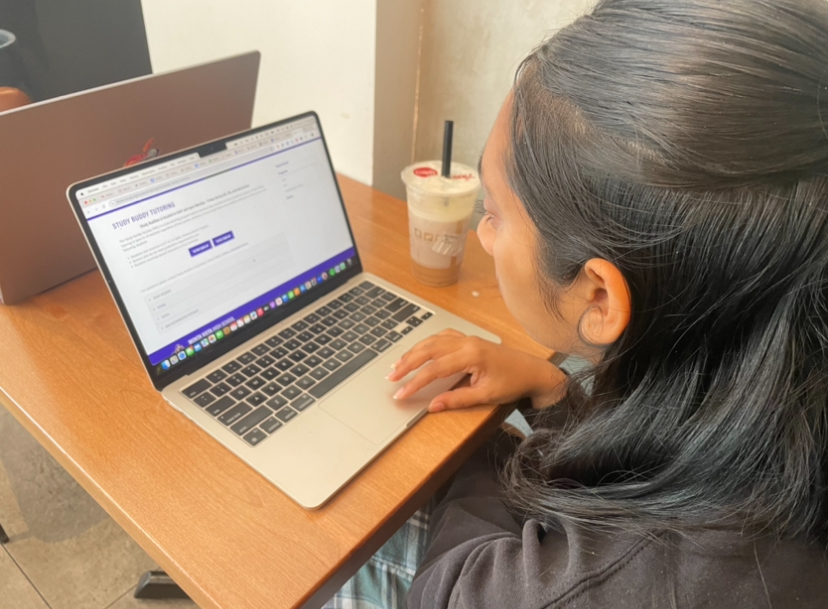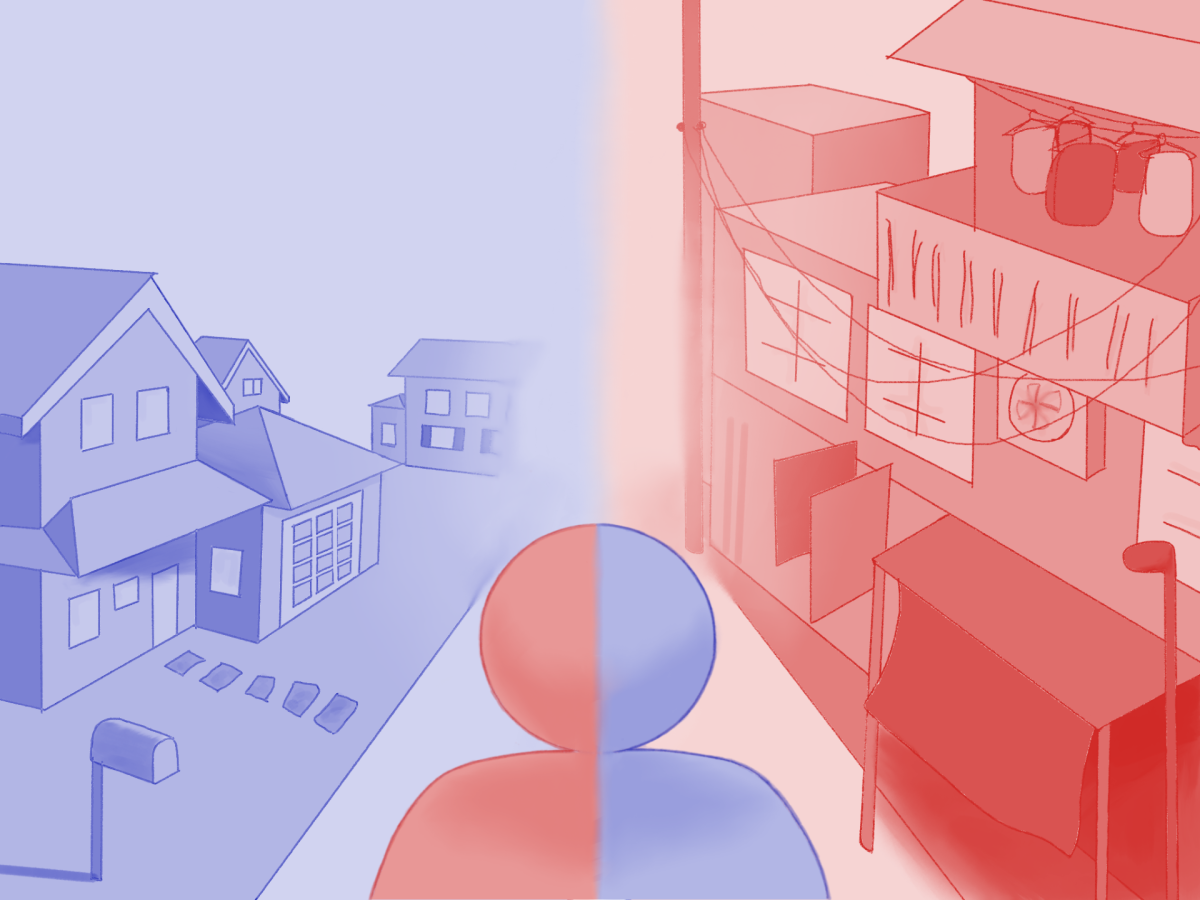Diwali
As Science Curriculum Lead Kavita Gupta began to fry the dough she rolled out earlier in a pan with oil, the smell of sweet fried dough and milk solids immediately begins to waft throughout the house. This sweet is called gujiya — a common dish in Northern India, where Gupta is from, and her favorite Diwali dish since her childhood.
“I learned this recipe by standing next to my mom and observing her,” Gupta said. “When we were younger, she would make everything and then say ‘OK, now you fill it’ and we felt so special. So that’s why it has such beautiful memories. Gujiya takes me back to that time.”
Gupta says gujiya is a type of dumpling and explains that the process of making it from scratch can take a while. However, regardless of the time and work, Gupta says she makes everything from scratch as a way to honor her mother’s tradition.
“My mom would always make it from scratch,” Gupta said. “That was her thing. My mom is now bedridden, so she cannot cook. To honor her, I made all of these and then sat down with a platter and ate samosas and gujiya.”
While Gupta’s favorite sweet is gujiya, her children prefer a coconut sweet made with condensed milk that resembles a pudding, called halwa. While Gupta hasn’t passed down the recipes to her children yet, this year, she has tried to teach them the process of making some foods like the coconut sweet.
“We’ve always celebrated Diwali as a cultural holiday but this time I intentionally [taught them more] as a little bit more of a traditional holiday,” Gupta said. “But I think these are tedious things to make, so I wouldn’t say they learned.”
This year Gupta’s daughter and son-in-law presented a new challenge for her as a cook. Both are now vegan, so Gupta changed traditional recipes to adapt to their dietary needs.
“I’m a good cook and I like to cook but they challenge me in ways I never thought was possible,” Gupta said. “So I’m going hunting once again for substitutes. And yes, I adapt to whatever works.”
Gupta acknowledges that food plays an important role in almost any celebration or holiday as it brings family and friends together. For her though, food plays an even bigger role during Diwali.
“At my age, when my mom’s so much older and not capable of making these anymore, these are just so precious for me because it connects me to her,” Gupta said. “The food connects me to the culture that I have grown up in, so it definitely has special meaning for me.”
Hanukkah
Hanukkah, a Jewish festival of lights, commemorates the miracle in the Temple, in which a small quantity of oil kept a menorah burning for eight days. Junior Erin Handelsman and her family celebrate the holiday by cooking and eating traditional Jewish foods with lots of oil to remember this history.
“To commemorate the oil that lasted, we typically eat this traditional dish called latkes, which is basically like fried potatoes, and it’s a recipe that my grandma uses,” Handelsman said. “We also eat jelly-filled doughnuts called sufganiyot or anything with oil in it.”
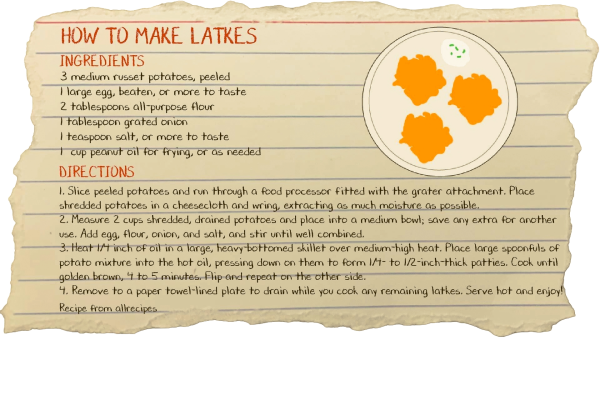
The oil is significant for many dishes beyond latkes and sufganiyot, including fried pastries and challah, a Jewish bread with a religious history.
Handelsman has celebrated the holiday since birth. When she was younger, she remembers attending big parties with her family, but now that Handelsman is in high school, she celebrates it less often and usually just with her family.
“I’m getting older and I just don’t have enough time or my grandparents don’t have enough energy to make a full, four-course meal for 15 people because it’s just a lot of work,” Handelsman said. “So, if you do it when you’re younger, then you really remember it and cherish those moments. Now that I’m older, it’s just like, ‘Do I really have to celebrate this?’”
However, Handelsman still believes that holidays such as Hanukkah along with food enjoyed during these special moments unite people and bring families closer together.
“When you have a sit-down meal with your family, it just brings everyone to this one place,” Handelsman said. “This one time to celebrate this mutual bonding you share, with food and family.”
French Christmas
Cookies in all different shapes and sizes cool down on trays in French teacher Sarah Finck’s kitchen as she continues to bake. The rich smell they give off are a result of the many different flavors, typically including gingerbread, pistachio, almonds, meringue, lemon, and more. The large quantity of cookies is then packaged neatly in boxes to share with friends and family. The tradition comes from Finck’s husband, who is from eastern France, near the border with Germany. In Alsace, a German influence on the cuisine can be seen in holiday traditions which have been adapted to become French over time.
“In Germany, there’s a Christmas cookie tradition, with a lot of gingerbread and spice and things with nuts,” Finck said. “His family isn’t Alsatian in origin but they lived there for a while and so his mom, who likes to cook a lot, would make this bredele.”
While Finck and her husband don’t use the same recipes as his mom, they add their own twist on the Christmas tradition. Typically, they hold a holiday party with friends to make these cookies and also to make latkes, as Finck grew up observing Judaism and likes to keep certain Hannkuah traditions.
“The cookies have been a fun way to bring in a very specific Eastern French tradition,” Finck said. “I think both of us are happy making food traditions from other religions. It’s part of how we celebrate holidays.”
Another popular French Christmas dessert is the Bûche de Noël — or the “log of Christmas” in English — which is a sponge cake rolled and frosted to resemble a yule log. While there are a few different historical interpretations of the tradition, it is said to have originated in medieval times in France to honor the Yule log each family burns in their hearth, which is a symbol of luck for the New Year.




